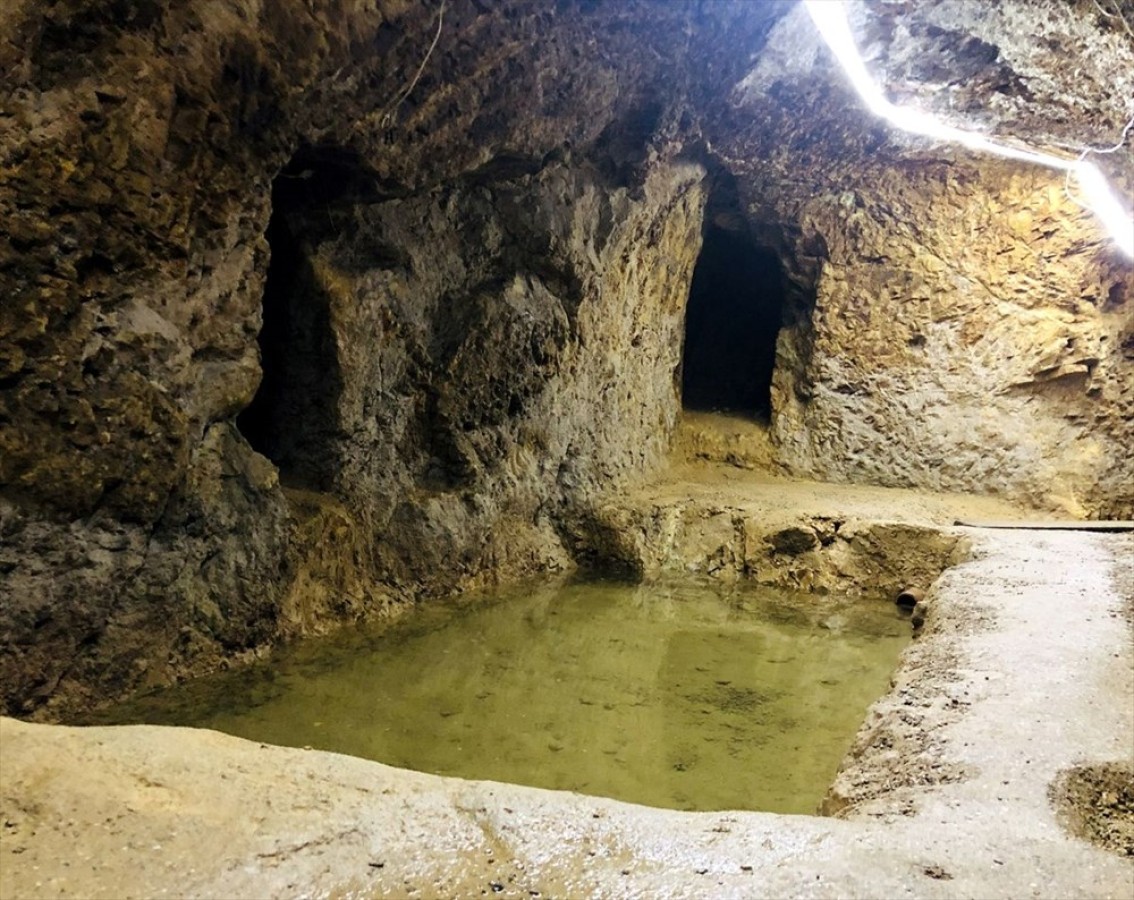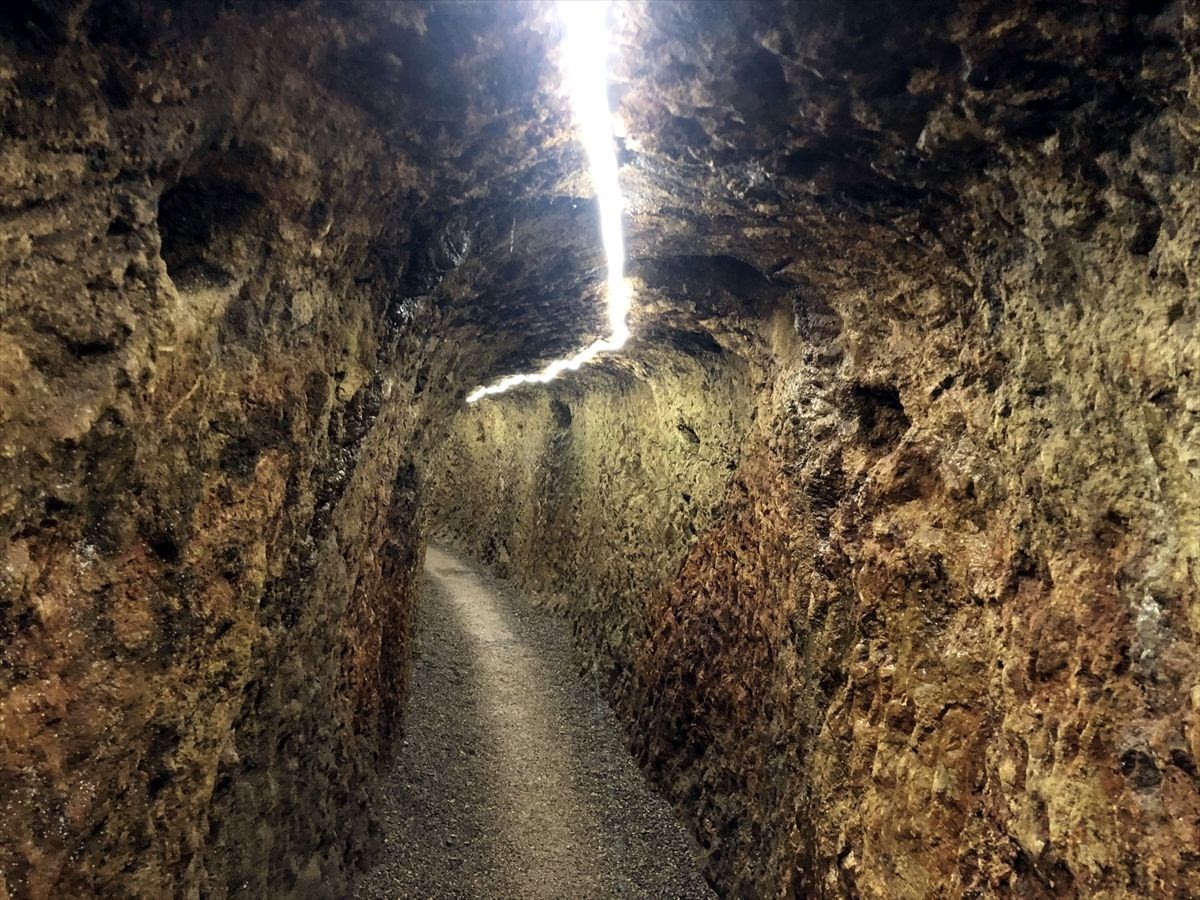Aydıntepe Underground City is a historical settlement located under the district center of Aydıntepe (formerly Hart) in Bayburt province, at a depth of approximately 2–2.5 meters from the surface, built by being carved into the tuff (tüfit) layer. This structure, consisting of galleries directly carved into the bedrock, vaulted (tonozlu) rooms, and large spaces, is one of the unique cultural assets in the region.
No other building material was used in its construction; the rooms and galleries were generally designed with a width of 1–1.5 meters and a height of 2–2.5 meters. Some rooms have a near-square plan (approximately 3×8 meters), while others are of different sizes. There are niches (nişler) in the walls for lighting purposes, and conical-shaped holes for ventilation and observation purposes.

Underground City (Aydıntepe Belediyesi)
Geographical and Historical Context
Aydıntepe is located in the inner part of the Eastern Black Sea Region, at the foothills of the Soğanlı Mountains. The region has hosted different civilizations since prehistoric times due to its fertile lands, proximity to water resources, and its location on trade routes. Traces of settlement are found in and around Aydıntepe starting from the Early Bronze Age; the Karaz/Kura-Araxes (Kura-Aras) culture was influential during this process. The region remained under the sovereignty of states such as the Hittites, Urartians, Persians, the Kingdom of Pontus, Rome, and Byzantium throughout history.
It is thought that Aydıntepe was called Halde or Khalde in the ancient period, and the name Hart was derived from these names. It developed as an important settlement during the Roman and Byzantine periods, and after the 1071 Manzikert Victory (Malazgirt Zaferi), it came under Seljuk, and then Ottoman rule.
Architectural Features and Plan Layout
The underground city was carved from the yellow-white or greenish tuff, known as Bayburt stone. Although this stone is known for being easy to work with, its water absorption property and susceptibility to erosion (aşınma) have caused collapses (göçükler) over time. The structure does not have a precise symmetry or a standard plan scheme; the sizes and shapes of the spaces vary according to the rock structure.
Limited excavation and cleaning work was carried out by the Erzurum Museum Directorate in 1989–1990 and 1997. In the survey/measurement drawing (rölöve) study conducted in 2022, a section approximately 580 meters long was documented. The underground city consists of different units such as corridors, rooms opening into one another, hall areas with symmetrical rooms on both sides, a pool (havuz) built for water drainage, and a possible chapel space.

Underground City (Aydıntepe Belediyesi)
Function and Use
Research shows that the underground city was probably built in the 3rd century A.D. and remained in use for a long time. Although there is no certainty about its initial purpose of construction, it likely served a defensive and refuge (sığınma) function. Some researchers suggest that it might have been built before Christianity was legalized in the Roman Empire (Edict of Milan / Milano Fermanı, 313), and that early Christians might have hidden here. The other view is that it might have belonged to the city of Halde in the region.
The underground city may have been re-functionalized in various periods from Late Roman to Middle Byzantine. For example, external threats such as Sasanian (Sasanî) raids between the 4th–7th centuries may have led the populace to use this place as a refuge again.

Underground City (Anadolu Ajansı)
Conservation Status and Problems
Being located under the present-day settlement and the inability to drain the ground water increase the risk of collapse in the structure. Some additions made in the modern period (concrete columns, keystone (kilit taş) imitations, cement plaster (sıvalar)) have damaged the original texture. Furthermore, the existing lighting and floor arrangements are insufficient. To ensure the structure can be visited safely, the water drainage system needs to be improved, the artificial additions must be removed, and conservation work must be carried out.


